($48):  Lovely savory, olive-like notes balance the dark fruitiness of this big bold and broad Cabernet. Fine tannins provide structure without being astringent or intrusive. There’s a delightful hint of bitterness in the finish to emphasize this is not a “fruit bomb.” … Read more
Lovely savory, olive-like notes balance the dark fruitiness of this big bold and broad Cabernet. Fine tannins provide structure without being astringent or intrusive. There’s a delightful hint of bitterness in the finish to emphasize this is not a “fruit bomb.” … Read more
Category Archives: WRO Reviews
Michèle Capdepon, Blanquette de Limoux (Languedoc, France) Brut NV
($20, Wines Of France):  The Languedoc region of France is a treasure trove for wines, from those labeled Indication Géographique Protégée (IGP, or what was formerly Vin de Pays) to more prestigious ones that carry an appellation, such as this one.… Read more
The Languedoc region of France is a treasure trove for wines, from those labeled Indication Géographique Protégée (IGP, or what was formerly Vin de Pays) to more prestigious ones that carry an appellation, such as this one.… Read more
Jean-Marc Brocard, Chablis (Burgundy, France) “Ste. Claire” 2019
($24):  Jean-Marc Brocard, one of my favorite producers in Chablis, consistently makes a stunning array of wines. I can’t remember a wine from them that failed to impress. The family-run estate farms organically and shuns the use of new oak barrels because they want to emphasize the character the site imparts to the grapes. … Read more
Jean-Marc Brocard, one of my favorite producers in Chablis, consistently makes a stunning array of wines. I can’t remember a wine from them that failed to impress. The family-run estate farms organically and shuns the use of new oak barrels because they want to emphasize the character the site imparts to the grapes. … Read more
Bodega Trivento, Mendoza (Argentina) Malbec Reserve 2019
($12):  This lighter styled Malbec will appeal especially to those who find most Malbecs too overpowering or heavy. Still, it has good concentration despite its lack of muscularity. Savory, smoke-y undertones balance the dark fruity profile. Suave, mild tannins mean this is a wine to enjoy now. … Read more
This lighter styled Malbec will appeal especially to those who find most Malbecs too overpowering or heavy. Still, it has good concentration despite its lack of muscularity. Savory, smoke-y undertones balance the dark fruity profile. Suave, mild tannins mean this is a wine to enjoy now. … Read more
Raeburn Winery, Russian River Valley (Sonoma County, California) Pinot Noir 2019
($25):  A whiff of savory notes peek out from the ripe Sonoma fruit lending intrigue to this Pinot Noir. A touch of heat and sweetness in the finish reflects the stated 14.5 percent alcohol. Mild tannins allow you to enjoy it with grilled salmon.… Read more
A whiff of savory notes peek out from the ripe Sonoma fruit lending intrigue to this Pinot Noir. A touch of heat and sweetness in the finish reflects the stated 14.5 percent alcohol. Mild tannins allow you to enjoy it with grilled salmon.… Read more
Dry Creek Vineyard, Dry Creek Valley (Sonoma County, California) Meritage 2018
($32):  Dry Creek Vineyard, still owned by the Stare family, is approaching their half-century mark of making wine in Dry Creek Valley. Though I’ve always been a fan of their balanced wines, I think they are just getting better and better. … Read more
Dry Creek Vineyard, still owned by the Stare family, is approaching their half-century mark of making wine in Dry Creek Valley. Though I’ve always been a fan of their balanced wines, I think they are just getting better and better. … Read more
Ai Galli, Delle Venezie DOC (Italy) Pinot Grigio 2019
($12): 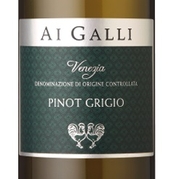 Ai Galli also shows their talents with a bargain-priced “entry-level,” as they call it, Pinot Grigio. Fresh and floral wine, it has a captivating delicacy. This clean crisp Pinot Grigio finishes with a welcoming hint of bitterness. And look at the price. … Read more
Ai Galli also shows their talents with a bargain-priced “entry-level,” as they call it, Pinot Grigio. Fresh and floral wine, it has a captivating delicacy. This clean crisp Pinot Grigio finishes with a welcoming hint of bitterness. And look at the price. … Read more
Cantina Kaltern, Kalterersee Classico Superiore DOC (Alto Adige, Italy) “Quintessenz” 2017
($34, Enotec Imports, Inc):  Since this DOC is not well-known to most Americans (I had to run to the reference books), a little background. The DOC is named for a large lake that lies within Alto Adige. “Classico,” as usual in the Italian DOC nomenclature, refers to the original or heart of the area. … Read more
Since this DOC is not well-known to most Americans (I had to run to the reference books), a little background. The DOC is named for a large lake that lies within Alto Adige. “Classico,” as usual in the Italian DOC nomenclature, refers to the original or heart of the area. … Read more
Celli, Romagna Albana Secco DOCG (Italy) “I Croppi” 2019
($20):  The Albana grape is uniquely suited to the Bertinoro subregion of Romagna where Celli is located thanks to the calcium rich soil, locally known as spungone, a vestige of its underwater location 3.5 million years ago. Celli’s 2019 I Croppi is outstanding. … Read more
The Albana grape is uniquely suited to the Bertinoro subregion of Romagna where Celli is located thanks to the calcium rich soil, locally known as spungone, a vestige of its underwater location 3.5 million years ago. Celli’s 2019 I Croppi is outstanding. … Read more
Domaine Antonin Guyon, Delle Venezie DOC (Italy) Pinot Grigio 2019
($12):  Ai Galli also shows their talents with a bargain-priced “entry-level,” as they call it, Pinot Grigio. Fresh and floral wine, it has a captivating delicacy. This clean crisp Pinot Grigio finishes with a welcoming hint of bitterness. And look at the price. … Read more
Ai Galli also shows their talents with a bargain-priced “entry-level,” as they call it, Pinot Grigio. Fresh and floral wine, it has a captivating delicacy. This clean crisp Pinot Grigio finishes with a welcoming hint of bitterness. And look at the price. … Read more
Merry Edwards Winery, Russian River Valley (Sonoma County, California) Sauvignon Blanc 2018
($38):  Merry Edwards, one of California top Pinot Noir producers, is also making a name for herself with Sauvignon Blanc. Edwards’ working with Sauvignon Blanc should come as no surprise since she was responsible for the legendary ones from Matanzas Creek when she was the winemaker there. … Read more
Merry Edwards, one of California top Pinot Noir producers, is also making a name for herself with Sauvignon Blanc. Edwards’ working with Sauvignon Blanc should come as no surprise since she was responsible for the legendary ones from Matanzas Creek when she was the winemaker there. … Read more
Thierry Germain / Domaine des Roches Neuves, Saumur Champigny (Loire Valley, France) Clos de L’Échelier 2018
($70, Vineyard Road):  Thierry Germain at Domaine des Roches Neuves is one of the Loire’s young superstars. He makes a range of reds from Cabernet Franc, as is the tradition in Saumur Champigny. This one, one of his top cuvées, comes from a 4.5-acre terraced plot of 70-year old vines. … Read more
Thierry Germain at Domaine des Roches Neuves is one of the Loire’s young superstars. He makes a range of reds from Cabernet Franc, as is the tradition in Saumur Champigny. This one, one of his top cuvées, comes from a 4.5-acre terraced plot of 70-year old vines. … Read more
Château de Corcelles, Vin de France (France) Gamay “Les Copains d’Abord” 2018
($18, Seaview Imports):  Château de Corcelles, an historic property located just east of Villé-Morgon, produces a range of Beaujolais. They also produce this wine, entirely from Gamay, presumably, from vines that are located just outside of the Beaujolais delimited zone. Though it has the charm of Beaujolais, they can’t legally call it that. … Read more
Château de Corcelles, an historic property located just east of Villé-Morgon, produces a range of Beaujolais. They also produce this wine, entirely from Gamay, presumably, from vines that are located just outside of the Beaujolais delimited zone. Though it has the charm of Beaujolais, they can’t legally call it that. … Read more
Louis Max, Côtes-du-Rhône (Rhône Valley, France) 2018
($15, HB Wine Imports): 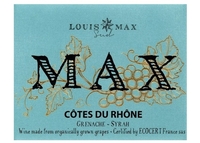 As this wine shows, wines from the broad Côtes du Rhône appellation can provide an excellent pleasure-to-price ratio. A balanced and lively Grenache and Syrah blend, it has good concentration and the oomph you would expect from the south of France. … Read more
As this wine shows, wines from the broad Côtes du Rhône appellation can provide an excellent pleasure-to-price ratio. A balanced and lively Grenache and Syrah blend, it has good concentration and the oomph you would expect from the south of France. … Read more
Château de la Maltroye, Chassagne-Montrachet 1er Cru (Burgundy, France) Clos du Château de la Maltroye 2018
($96, Jeanne-Marie de Champs Selection):  Château de la Maltroye, a consistently reliable producer of both red and white wines, succeeded admirably in 2018. This white, from their monopole, exhibits the broader and weightier minerality characteristic of Chassagne, compared to Puligny. Good acidity balances and amplifies its charms. … Read more
Château de la Maltroye, a consistently reliable producer of both red and white wines, succeeded admirably in 2018. This white, from their monopole, exhibits the broader and weightier minerality characteristic of Chassagne, compared to Puligny. Good acidity balances and amplifies its charms. … Read more
Gallina de Piel, Empordà (Catalonia, Spain) “Roca del Crit” 2018
($30, Bluest Sky Group):  Roca del Crit (screaming rock) was a place behind El Bulli where, the story goes, David Seijas, the sommelier at that famed restaurant, could escape and scream to relieve tension from work. Roca del Crit is more robust than its stable mate, Mimetic, with a focus more on minerals and earth. … Read more
Roca del Crit (screaming rock) was a place behind El Bulli where, the story goes, David Seijas, the sommelier at that famed restaurant, could escape and scream to relieve tension from work. Roca del Crit is more robust than its stable mate, Mimetic, with a focus more on minerals and earth. … Read more
Gallina de Piel, Calatayud (Aragón, Spain) “Mimetic” 2018
($15, Bluest Sky Group):  Though I’ve given some background on the Gallina de Piel wines previously, it bears repeating because their wines represent great bargains. So, it’s worth hearing the story again. Two sommeliers, one of whom, David Seijas, worked at El Bulli, named the best restaurant in the world five times by Restaurant magazine, founded Gallina de Piel. … Read more
Though I’ve given some background on the Gallina de Piel wines previously, it bears repeating because their wines represent great bargains. So, it’s worth hearing the story again. Two sommeliers, one of whom, David Seijas, worked at El Bulli, named the best restaurant in the world five times by Restaurant magazine, founded Gallina de Piel. … Read more
Herdade do Esporão, Vinho Regional Alentejano (Portugal) “Monte Velho” 2019
($9, Now Wine Imports): 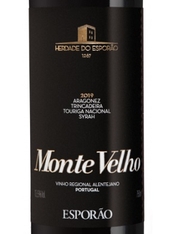 Looking for value? Look no further than this charming and substantial wine. Weighing in at a modest 13.5 percent-stated alcohol, it delivers dark fruit flavors intertwined with spicy and earthy ones. Suave tannins allow immediate enjoyment. Good acidity keeps it fresh and lively. … Read more
Looking for value? Look no further than this charming and substantial wine. Weighing in at a modest 13.5 percent-stated alcohol, it delivers dark fruit flavors intertwined with spicy and earthy ones. Suave tannins allow immediate enjoyment. Good acidity keeps it fresh and lively. … Read more
Cantina Sanpaolo, Greco di Tufo DOCG (Campania, Italy) 2017
($20, Enotec Imports, Inc):  Greco di Tufo, one of Italy’s premier white grapes, is rarely found outside its home in Campania. Sanpaolo’s is an excellent example, full-bodied, yet crisp. It is mineral-infused, reflecting the lava-like residue of Vesuvius. Its acidity imbues it with energy and magnifies its charms. … Read more
Greco di Tufo, one of Italy’s premier white grapes, is rarely found outside its home in Campania. Sanpaolo’s is an excellent example, full-bodied, yet crisp. It is mineral-infused, reflecting the lava-like residue of Vesuvius. Its acidity imbues it with energy and magnifies its charms. … Read more
Louis Latour, Corton-Charlemagne Grand Cru, Burgundy, 1985
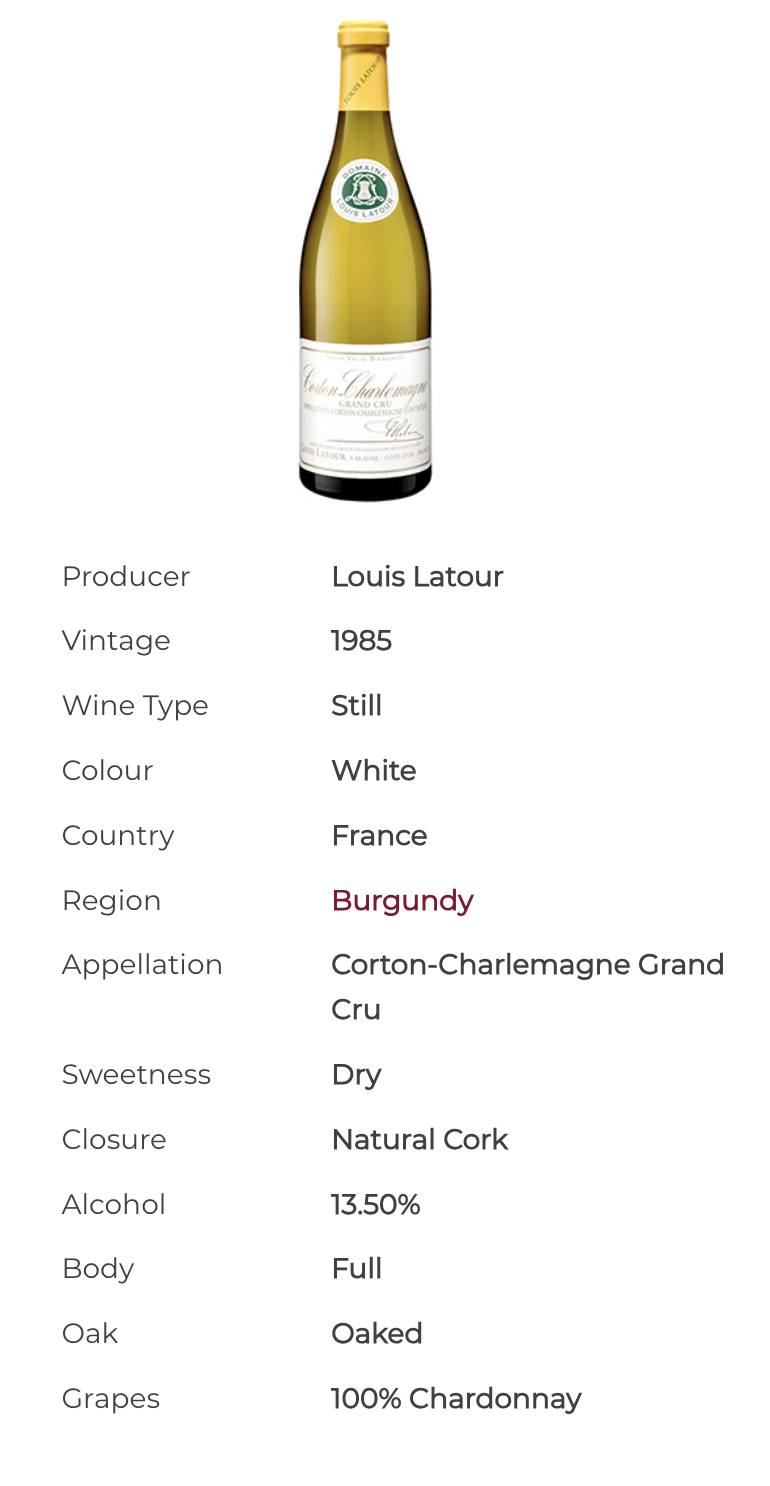 Drinking Window: 2021 – 2022
Drinking Window: 2021 – 2022Il Poggiolo, Brunello di Montalcino DOCG (Tuscany, Italy) 2015
($70, Enotec Imports, Inc):  A paradox, the traditionally framed Il Poggiolo Brunello marries the ripeness of the 2015 vintage with a lovely austerity. Not a blowsy wine, it combines dark cherry-like fruit with a core of minerals. Importantly, especially for the vintage, it has great acidity, which imparts a wonderful vivacity to the wine. … Read more
A paradox, the traditionally framed Il Poggiolo Brunello marries the ripeness of the 2015 vintage with a lovely austerity. Not a blowsy wine, it combines dark cherry-like fruit with a core of minerals. Importantly, especially for the vintage, it has great acidity, which imparts a wonderful vivacity to the wine. … Read more
Rodney Strong Vineyards, Chalk Hill, Sonoma County (California) Chardonnay 2018
($22):  It is not surprising that Rodney Strong’s Chalk Hill Chardonnay continues to be an outstanding wine. If anyone knows where to grow Chardonnay in Sonoma, it’s Rodney Strong. He was bottling a Chardonnay under that label before there even was a Chalk Hill AVA. … Read more
It is not surprising that Rodney Strong’s Chalk Hill Chardonnay continues to be an outstanding wine. If anyone knows where to grow Chardonnay in Sonoma, it’s Rodney Strong. He was bottling a Chardonnay under that label before there even was a Chalk Hill AVA. … Read more
Anselmo Mendes, Monção e Melgaço (Vinho Verde, Portugal) Alvarinho “Muros Antigos” 2019
($15): 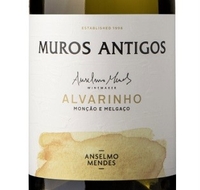 Vinho Verde, Portugal’s largest appellation, lies in that country’s northwest corner, bordering Spain. It’s known for racy high-acid wines. Some, sadly, provide little more than acidity. Enter Anselmo Mendes. His Muros Antigos delivers the mouth-cleansing zippy edge, but in addition there’s a lovely floral quality and an engaging lime-like quality. … Read more
Vinho Verde, Portugal’s largest appellation, lies in that country’s northwest corner, bordering Spain. It’s known for racy high-acid wines. Some, sadly, provide little more than acidity. Enter Anselmo Mendes. His Muros Antigos delivers the mouth-cleansing zippy edge, but in addition there’s a lovely floral quality and an engaging lime-like quality. … Read more
Anselmo Mendes, Monção e Melgaço (Vinho Verde, Portugal) “Alvarinho Contacto” 2019
($19): 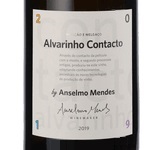 Monção e Melgaço, one of the nine official sub-regions of Vinho Verde, lies on the southern border of Galicia, the Spanish province that occupies the northwest corner of the Iberian Peninsula. The Alvarinho grape reigns here. Mendes is a new wave producer aiming to show what can be done with this grape in this sub-region, announcing his wines with a bottle engraved with the name of sub-region, the grape, as well as his name. … Read more
Monção e Melgaço, one of the nine official sub-regions of Vinho Verde, lies on the southern border of Galicia, the Spanish province that occupies the northwest corner of the Iberian Peninsula. The Alvarinho grape reigns here. Mendes is a new wave producer aiming to show what can be done with this grape in this sub-region, announcing his wines with a bottle engraved with the name of sub-region, the grape, as well as his name. … Read more
Donnafugata, Terre Siciliane IGT (Sicily, Italy) “Tancredi” 2016
($39, Folio Fine Wine Partners):  While Donnafugata maintains a traditional focus on indigenous Sicilian grapes, such as Nero d’Avola, they also have planted international ones, such as Cabernet Sauvignon, and unusual ones, such as Tannat. Those three grapes comprise the majority of the blend of Tancredi. … Read more
While Donnafugata maintains a traditional focus on indigenous Sicilian grapes, such as Nero d’Avola, they also have planted international ones, such as Cabernet Sauvignon, and unusual ones, such as Tannat. Those three grapes comprise the majority of the blend of Tancredi. … Read more
Donnafugata, Cerasuolo di Vittoria DOCG (Sicily, Italy) “Floramundi” 2017
($30, Folio Fine Wine Partners):  Cerasuolo di Vittoria, located in southeastern Sicily, is that island’s only DOCG wine. Regulations require that Nero d’Avola comprise at least 50, but no more than 70, percent of the blend. Frappato fills out the blend. … Read more
Cerasuolo di Vittoria, located in southeastern Sicily, is that island’s only DOCG wine. Regulations require that Nero d’Avola comprise at least 50, but no more than 70, percent of the blend. Frappato fills out the blend. … Read more
Jean Pascal et Fils, Puligny-Montrachet (Burgundy, France) “Les Enseignères” 2019
($56, Jeanne-Marie de Champs Selection):  This lieu-dit, entitled only to a village appellation, lies across the road, but downhill from the Grand Cru Bienvenue-Bâtard-Montrachet. Even in Jean Pascal’s talented hands, this village wine is not in the Grand Cru category, but it is more impressive than many producers’ premier cru — and at a far more attractive price. … Read more
This lieu-dit, entitled only to a village appellation, lies across the road, but downhill from the Grand Cru Bienvenue-Bâtard-Montrachet. Even in Jean Pascal’s talented hands, this village wine is not in the Grand Cru category, but it is more impressive than many producers’ premier cru — and at a far more attractive price. … Read more
Domaine Michel Bouzereau et Fils, Meursault (Burgundy, France) “Les Grands Charrons” 2018
($68, Jeanne-Marie de Champs Selection):  It’s hard to go wrong with the wines from Domaine Michel Bouzereau, a leading name in Meursault. Here are my notes for this wine from a visit in November 2019: “Good as most people’s 1er cru. … Read more
It’s hard to go wrong with the wines from Domaine Michel Bouzereau, a leading name in Meursault. Here are my notes for this wine from a visit in November 2019: “Good as most people’s 1er cru. … Read more
Domaine Paul Pernot et ses Fils, Bourgogne Blanc Côte d’Or (Burgundy, France) 2019
($30, Jeanne-Marie de Champs Selection):  Domaine Paul Pernot, one of the top producers in Puligny-Montrachet, opts to use the new appellation, Bourgogne Côte d’Or, for this wine that they formerly labeled as Bourgogne Blanc. The new appellation requires that the grapes come exclusively from the Côte d’Or, the heart of Burgundy.… Read more
Domaine Paul Pernot, one of the top producers in Puligny-Montrachet, opts to use the new appellation, Bourgogne Côte d’Or, for this wine that they formerly labeled as Bourgogne Blanc. The new appellation requires that the grapes come exclusively from the Côte d’Or, the heart of Burgundy.… Read more
Domaine Lamarche, Vosne-Romanée Premier Cru (Burgundy, France) Les Chaumes 2018
($140, Jeanne-Marie de Champs Selection): 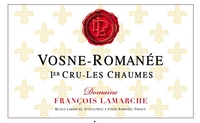 Vosne-Romanée could be considered the most revered village in Burgundy. Its wines, even those sporting just a village appellation, carry hefty price tags. And with the 25 percent tariffs, the prices are truly extraordinary. That said, this is a pretty extraordinary wine. … Read more
Vosne-Romanée could be considered the most revered village in Burgundy. Its wines, even those sporting just a village appellation, carry hefty price tags. And with the 25 percent tariffs, the prices are truly extraordinary. That said, this is a pretty extraordinary wine. … Read more
Rodney Strong Vineyards, Alexander Valley (Sonoma County, California) “Symmetry” Meritage 2016
($55):  Symmetry, according to Rodney Strong’s website, means balance. And I must admit, this wine is aptly named. It’s a suave complex Cabernet Sauvignon-dominant (70%) blend of five Bordeaux varieties. Roughly equal amounts of Merlot, Malbec, Cabernet Franc and Petit Verdot fill out the blend. … Read more
Symmetry, according to Rodney Strong’s website, means balance. And I must admit, this wine is aptly named. It’s a suave complex Cabernet Sauvignon-dominant (70%) blend of five Bordeaux varieties. Roughly equal amounts of Merlot, Malbec, Cabernet Franc and Petit Verdot fill out the blend. … Read more
Fanetti – Tenuta S. Agnese, Vino Nobile di Montepulciano DOCG (Tuscany, Italy) Riserva 2015
($33, Enotec Imports, Inc):  Fanetti, one of the great names for Vino Nobile di Montepulciano, has produced a fabulous 2015 Riserva from their Tenuta S. Agnese estate. Traditionally framed, that is, not all gussied up with oak and over ripe fruit, the dark cherry-like fruit of Sangiovese shines. … Read more
Fanetti, one of the great names for Vino Nobile di Montepulciano, has produced a fabulous 2015 Riserva from their Tenuta S. Agnese estate. Traditionally framed, that is, not all gussied up with oak and over ripe fruit, the dark cherry-like fruit of Sangiovese shines. … Read more
Buli, Toscana IGT (Tuscany, Italy) “Estate 44” 2016
($20, Dark Star Imports):  Estate 44 pays tribute to the Allied soldiers, including the owner’s father, who liberated Tuscany in the summer of 1944. A blend of Sangiovese (60%) Cabernet Sauvignon (20%) and equal amounts of Syrah and Merlot, it is more muscular than Buli’s 515 bottling, but has the same grace, suaveness and structure. … Read more
Estate 44 pays tribute to the Allied soldiers, including the owner’s father, who liberated Tuscany in the summer of 1944. A blend of Sangiovese (60%) Cabernet Sauvignon (20%) and equal amounts of Syrah and Merlot, it is more muscular than Buli’s 515 bottling, but has the same grace, suaveness and structure. … Read more
Buli, Toscana IGT (Tuscany, Italy) Sangiovese “515” 2016
($20, Dark Star Imports):  Robert Buly, an American who owns Buli, was drawn to Italy by heritage: his father married an Italian woman from Tuscany soon after WWII ended. On their website, he jokes that his father met his mother while on the search for red wine to drink. … Read more
Robert Buly, an American who owns Buli, was drawn to Italy by heritage: his father married an Italian woman from Tuscany soon after WWII ended. On their website, he jokes that his father met his mother while on the search for red wine to drink. … Read more
Piper-Heidsieck, Champagne (France) Brut Cuvée NV
($45, Folio Fine Wine Partners):  Founded in 1785, this venerable Champagne firm passed into the hands of the Descours family about a decade ago. Its non-vintage Brut has since taken a leap in quality. I remember Piper-Heidsieck as an ordinary Champagne a decade ago, lean and angular. … Read more
Founded in 1785, this venerable Champagne firm passed into the hands of the Descours family about a decade ago. Its non-vintage Brut has since taken a leap in quality. I remember Piper-Heidsieck as an ordinary Champagne a decade ago, lean and angular. … Read more
Domaine Bart, Marsannay (Burgundy, France) Clos du Roy 2018
($58, Jeanne-Marie de Champs Selection):  Domaine Bart is an A-list producer. Of course, their Grand Cru Bonnes Mares and Charmes-Chambertin are stunning. But, if you are looking for something that does not require taking out a mortgage before purchasing, look to their array of wines from Marsannay, a sleepy village north of Gevrey-Chambertin. … Read more
Domaine Bart is an A-list producer. Of course, their Grand Cru Bonnes Mares and Charmes-Chambertin are stunning. But, if you are looking for something that does not require taking out a mortgage before purchasing, look to their array of wines from Marsannay, a sleepy village north of Gevrey-Chambertin. … Read more
Domaine René Leclerc, Gevrey-Chambertin (Côte de Nuits, Burgundy, France) Clos Prieur 2018
($77, Jeanne-Marie de Champs Selection): 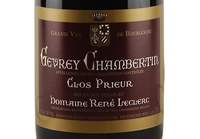 The Clos Prieur vineyard, which is just across the road from Mazi-Chambertin, a Grand Cru, covers two appellations. The upper part is Premier Cru and lower part carries a village appellation. But once again, producer can trump geography. … Read more
The Clos Prieur vineyard, which is just across the road from Mazi-Chambertin, a Grand Cru, covers two appellations. The upper part is Premier Cru and lower part carries a village appellation. But once again, producer can trump geography. … Read more
Château de la Maltroye, Chassagne Montrachet 1er Cru (Burgundy, France) Clos du Château de la Maltroye 2018
($80, Jeanne-Marie de Champs Selection):  This 2018 Clos du Château de la Maltroye, a monopole of the Château de la Maltroye, is one of the best red wines from Chassagne-Montrachet I’ve ever had. It’s the epitome of power and grace. Savory elements complement gorgeous dark fruity ones. … Read more
This 2018 Clos du Château de la Maltroye, a monopole of the Château de la Maltroye, is one of the best red wines from Chassagne-Montrachet I’ve ever had. It’s the epitome of power and grace. Savory elements complement gorgeous dark fruity ones. … Read more
Gilles Lafouge, Auxey-Duresses 1er Cru (Burgundy, France) Les Duresses Jeanne-Marie de Champs Selection 2018
($43):  With prices of Burgundy having gone through the roof, it’s a delight to find one that’s affordable, at least by Burgundy standards. As I’ve long maintained, villages off the beaten path, such as Auxey-Duresses which sits behind Meursault, and talented producers who, for whatever reason, have never gotten the praise they deserve, like Gilles Lafouge, is the combination consumers should seek out. … Read more
With prices of Burgundy having gone through the roof, it’s a delight to find one that’s affordable, at least by Burgundy standards. As I’ve long maintained, villages off the beaten path, such as Auxey-Duresses which sits behind Meursault, and talented producers who, for whatever reason, have never gotten the praise they deserve, like Gilles Lafouge, is the combination consumers should seek out. … Read more
Merry Edwards Winery, Sonoma Coast (Sonoma County, California) Pinot Noir 2018
($54):  Changes abound at Merry Edwards Winery, one of California’s leading Pinot Noir producers. In 2019, Louis Roederer, the Champagne house, purchased the winery. With the 2018 vintage, Heidi von der Mehden, who worked with Merry Edwards since 2015, took the reins as winemaker. … Read more
Changes abound at Merry Edwards Winery, one of California’s leading Pinot Noir producers. In 2019, Louis Roederer, the Champagne house, purchased the winery. With the 2018 vintage, Heidi von der Mehden, who worked with Merry Edwards since 2015, took the reins as winemaker. … Read more
Sullivan Rutherford Estate, Rutherford, Napa Valley (California) Cabernet Sauvignon Estate 2017
($110):  This is, in a word, a powerhouse. But along with all the deep black fruit there’s an appealing tar-like mineral and earthy component. Substantial but not intrusive tannins support the blend of Cabernet Sauvignon (87 percent) and Petit Verdot. A youthful wine, it needs to sit in the glass to appreciate its complexity. … Read more
This is, in a word, a powerhouse. But along with all the deep black fruit there’s an appealing tar-like mineral and earthy component. Substantial but not intrusive tannins support the blend of Cabernet Sauvignon (87 percent) and Petit Verdot. A youthful wine, it needs to sit in the glass to appreciate its complexity. … Read more
Merry Edwards Winery, Russian River Valley (Sonoma County, California) Pinot Noir 2018
($60):  The riper and deeper Merry Edwards Russian River Valley bottling, whose fruit comes from a variety of vineyards in that warmer AVA, is a fascinating contrast to their Sonoma Coast bottling. A weightier wine with black rather than red fruit tones, the Russian River Valley Pinot Noir is juicy and well within bounds despite a 14.5 percent-stated alcohol. … Read more
The riper and deeper Merry Edwards Russian River Valley bottling, whose fruit comes from a variety of vineyards in that warmer AVA, is a fascinating contrast to their Sonoma Coast bottling. A weightier wine with black rather than red fruit tones, the Russian River Valley Pinot Noir is juicy and well within bounds despite a 14.5 percent-stated alcohol. … Read more
Merry Edwards Winery, Russian River Valley (Sonoma County, California) Pinot Noir Klopp Ranch 2018
($73):  The floral 2018 Klopp Ranch Pinot Noir displays a gorgeous, layered complexity, with minerality and dark fruitiness intertwined. It conveys far more mineral-like nuances than the Merry Edwards Russian River Valley Pinot, reflecting the focus of a single vineyard. Hefty intensity without being over the top coupled with suave tannins and an engaging bitterness in the finish make it hard to resist now.… Read more
The floral 2018 Klopp Ranch Pinot Noir displays a gorgeous, layered complexity, with minerality and dark fruitiness intertwined. It conveys far more mineral-like nuances than the Merry Edwards Russian River Valley Pinot, reflecting the focus of a single vineyard. Hefty intensity without being over the top coupled with suave tannins and an engaging bitterness in the finish make it hard to resist now.… Read more
Merry Edwards Winery, Russian River Valley (Sonoma County, California) Pinot Noir Meredith Estate 2018
($80):  Unlike the Merry Edwards Klopp Ranch and Olivet Lane Pinot Noirs, the youthful 2018 Meredith Estate displays toasty oak flavors but little else initially. However, befitting a youthful, tightly wound wine, its considerable charms emerge over time. Denser and more concentrated than the other two, it remains balanced and within bounds. … Read more
Unlike the Merry Edwards Klopp Ranch and Olivet Lane Pinot Noirs, the youthful 2018 Meredith Estate displays toasty oak flavors but little else initially. However, befitting a youthful, tightly wound wine, its considerable charms emerge over time. Denser and more concentrated than the other two, it remains balanced and within bounds. … Read more
Merry Edwards Winery, Russian River Valley (Sonoma County, California) Pinot Noir Olivet Lane 2018
($72):  The dark and brooding 2018 Olivet Lane Pinot Noir is amazingly refined, especially considering its concentration. Less floral and fragrant than the Klopp Ranch, it expands and explodes as it sits in the glass. Initially, black fruit flavors predominate, but with air and time, savory notes appear and take over. … Read more
The dark and brooding 2018 Olivet Lane Pinot Noir is amazingly refined, especially considering its concentration. Less floral and fragrant than the Klopp Ranch, it expands and explodes as it sits in the glass. Initially, black fruit flavors predominate, but with air and time, savory notes appear and take over. … Read more
Jean Féray et Fils, Savigny-les-Beaune (Burgundy, France) “Sous La Cabotte” 2018
($40, Jeanne-Marie de Champs Selection):  The 2018 vintages produced some charming red Burgundies, some of which, such as this one, are delicious now. Féray’s has wonderful depth for a village wine, reflecting the ripeness of the grapes due to the warmth of the vintage. … Read more
The 2018 vintages produced some charming red Burgundies, some of which, such as this one, are delicious now. Féray’s has wonderful depth for a village wine, reflecting the ripeness of the grapes due to the warmth of the vintage. … Read more
Catena Zapata, Mendoza (Argentina) “Nicolás Catena Zapata” 2016
($99, Winebow):  There is no question that the Catena family is among the leading producers in Argentina — and perhaps the single leader of the pack. Nicolás Catena brought Argentine wines into the modern area by discovering what is universally accepted now: planting vines at higher altitudes in warm climates reduces the likelihood of harvesting over ripe grapes and making jammy wines. … Read more
There is no question that the Catena family is among the leading producers in Argentina — and perhaps the single leader of the pack. Nicolás Catena brought Argentine wines into the modern area by discovering what is universally accepted now: planting vines at higher altitudes in warm climates reduces the likelihood of harvesting over ripe grapes and making jammy wines. … Read more
Champagne Devaux, Champagne (France) “Augusta” Brut NV
($40, Seaview Imports):  The Augusta refers to Augusta-Maria Herbin, Devaux’s wife, another widow of Champagne, who led the firm from 1879 to 1895. Family ownership ended in 1987, when, according to their website, it passed to the Union Auboise, now Groupe Vinicole Champagne Devaux, a co-operative. … Read more
The Augusta refers to Augusta-Maria Herbin, Devaux’s wife, another widow of Champagne, who led the firm from 1879 to 1895. Family ownership ended in 1987, when, according to their website, it passed to the Union Auboise, now Groupe Vinicole Champagne Devaux, a co-operative. … Read more
Charles Heidsieck, Champagne (France) “Réserve” Brut NV
($69, Folio Fine Wine Partners):  This is a fabulously complex and elegant Champagne. Yes, it’s pricey for a non-vintage Champagne, but I think it’s worth it. The website says that their non-vintage wine is an equal blend of all three varieties, Chardonnay, Pinot Noir and Pinot Meunier, that has been aged on the lees for three years. … Read more
This is a fabulously complex and elegant Champagne. Yes, it’s pricey for a non-vintage Champagne, but I think it’s worth it. The website says that their non-vintage wine is an equal blend of all three varieties, Chardonnay, Pinot Noir and Pinot Meunier, that has been aged on the lees for three years. … Read more
Naumes Family Vineyards, Rouge Valley (Oregon) Pinot Noir Estate, “Pommard Clone” 2017
($40):  If the Naumes Pinot Noir Clone 667 was the weight-lifter, this one is the ballerina. Light in color and on the palate, it dances on the palate. It’s a captivating lighter style of Pinot Noir. If you prefer the Clone 667, you won’t be enthralled by this one and vice-versa. … Read more
If the Naumes Pinot Noir Clone 667 was the weight-lifter, this one is the ballerina. Light in color and on the palate, it dances on the palate. It’s a captivating lighter style of Pinot Noir. If you prefer the Clone 667, you won’t be enthralled by this one and vice-versa. … Read more
